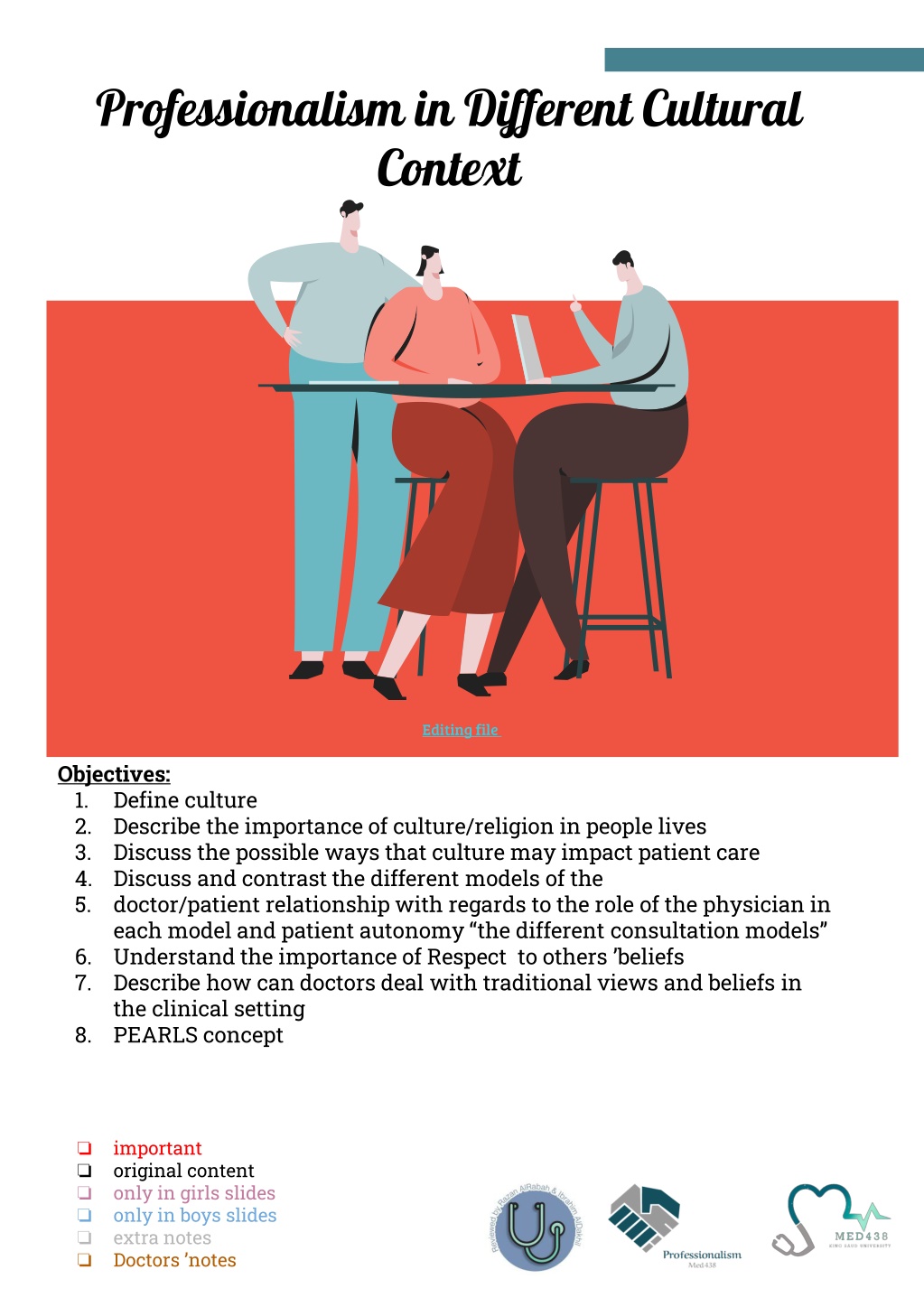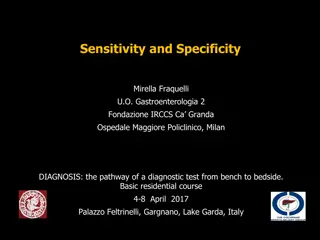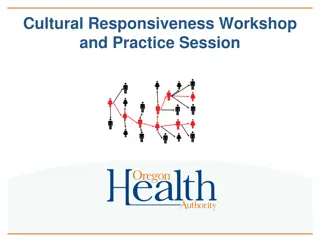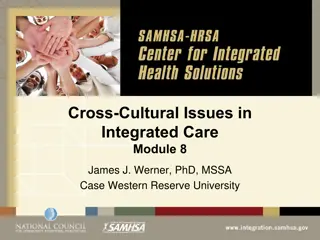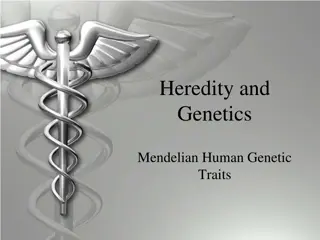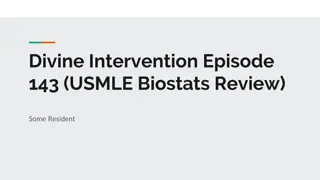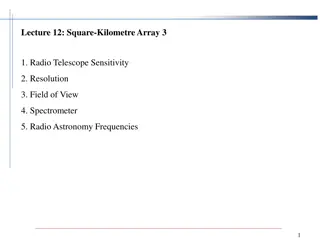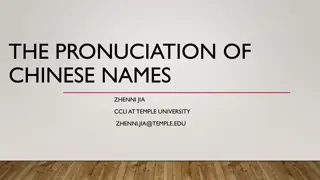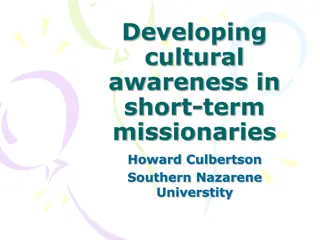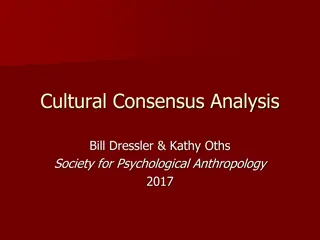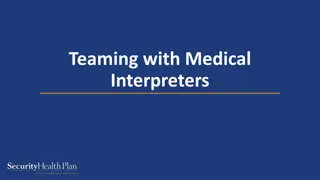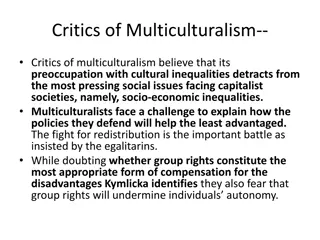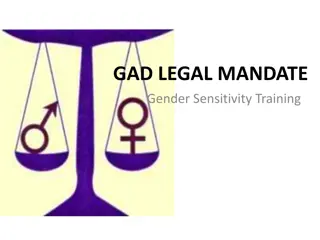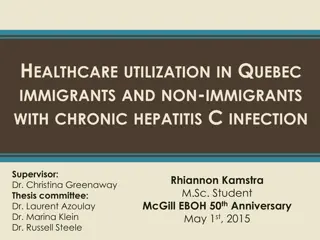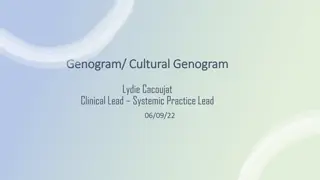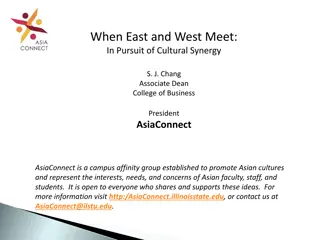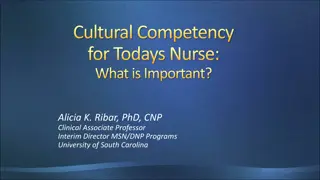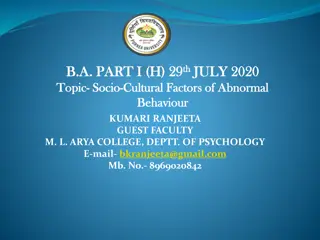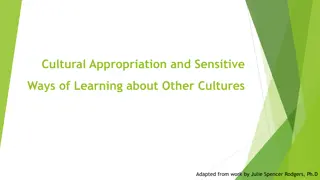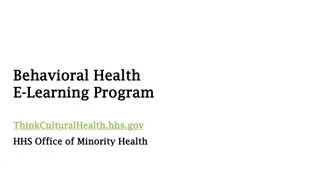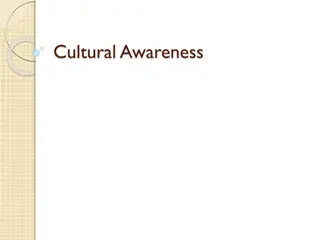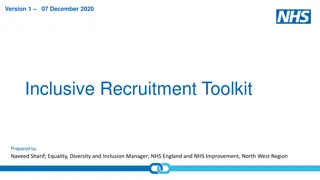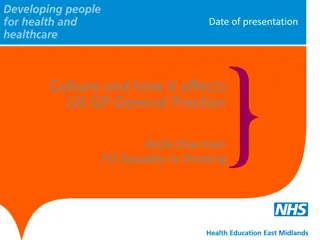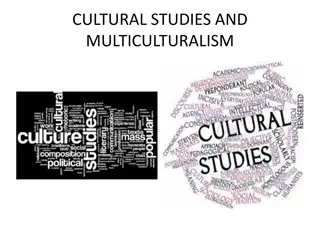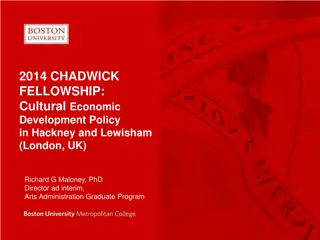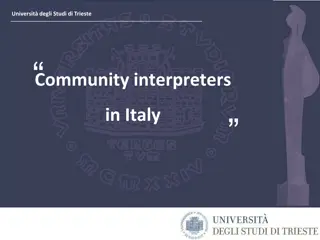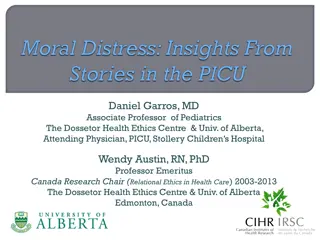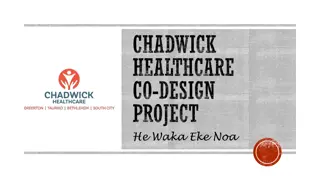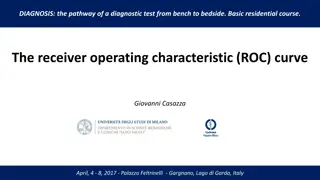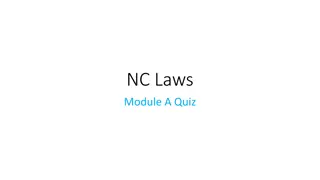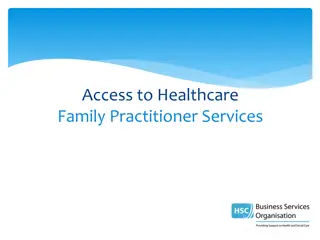Understanding Cultural Sensitivity in Healthcare
Exploring the impact of culture and religion on patient care, this content discusses the importance of respecting diverse beliefs, cultural influences on healthcare practices, and special considerations in professional care related to cultural differences.
Download Presentation

Please find below an Image/Link to download the presentation.
The content on the website is provided AS IS for your information and personal use only. It may not be sold, licensed, or shared on other websites without obtaining consent from the author. Download presentation by click this link. If you encounter any issues during the download, it is possible that the publisher has removed the file from their server.
E N D
Presentation Transcript
Professionalism in Different Cultural Context Editing file Objectives: 1. Define culture 2. Describe the importance of culture/religion in people lives 3. Discuss the possible ways that culture may impact patient care 4. Discuss and contrast the different models of the 5. doctor/patient relationship with regards to the role of the physician in each model and patient autonomy the different consultation models 6. Understand the importance of Respect to others beliefs 7. Describe how can doctors deal with traditional views and beliefs in the clinical setting 8. PEARLS concept important original content only in girls slides only in boys slides extra notes Doctors notes
Cultural Context In Under-graduate Medical Education Curriculum The goal of the curriculum should be to prepare students to care for patients from diverse social and cultural backgrounds including racial, ethnic and gender biases Characteristics of Professionalism Conduct on the job Competency Responsibility Attitude Medical Professionalism Three fundamental principles: . Patient welfare 1 ecitsuj laicoS . ymonotua tneitaP . 3 2 Patient Welfare Including Autonomy Professional competence Honesty with patients integrity Caring attitude Patient confidentiality Scientific knowledge Maintaining trust Setting and maintaining professional standards Social Justice A fair Managing conflict of interest Improving quality and access to care distribution of resources Respect for colleagues
What is Culture? How things are done in a certain place Culture can mean many things. Culture has been defined as the beliefs ,customs ,habits, & language ecalp & emit ralucitrap ni gnivil elpoep yb derahs . Culture is the different ways of living ralucitrap a yb detibihxe eht ot noitareneg eno morf dettimsnart era taht ,elpoep fo puorg srehto morf puorg taht hsiugnitsid hcihw dna txen Cultural variation Cultural differences transcend geographical regions, ethnicity & nationality. Cultural variation may exist within people that share similar ethnic background and nationality and are influenced by: Religion Social class Region Why is it important to think about cultural differences at work ? Culture is directly related to health promotion, disease prevention, early detection, access to health care, trust and compliance. Religion & Culture in our society Are potential sources of moral purpose and personal strength Tell us how to behave, and what is right and wrong Offer support and structure to cope with life s stressful events . Enhance positive experiences such as optimism and hope
However ! Sometimes certain popular cultural practices or folk medicine may have a negative impact tneitap eht no The doctors unfamiliarity of certain cultural sfeileb suoigiler ro stneitap eht ot mrah yrassecennu esuac yam . s well being. Special Cultural Issues In Professional Care In Different Parts Of The World Sharing of confidential information Uncovering of face for females Undressing of female patients eye contact History taking of female adults from parents or husbands Giving information to patients in a way they can understand Physicians must not exploit patient s vulnerability or lack of medical knowledge In Research Research should not be contrary to the patient s interest e.g. exploitation of developing countries patients. Research protocol should be approved by a research ethics committee. This committee may be non existent in many settings. Your conduct in the research must not be influenced by payments or gifts. Record your research results truthfully Accepting gifts or other inducements You should not ask for or accept any material rewards, except those of insignificant value from representatives of pharmaceutical companies. Help with conferences and educational activities may be acceptable Cultural competency Cultural competency refers to possessing knowledge, awareness, and respect for other cultures
Focusing On Knowledge In Cultural Context It is important for a medical student or postgraduate trainee to learn about the surrounding community in which he/she practices or trains. E.g. Socio economic status, patterns of housing nutritional habits, healing practices and disease incidence and prevalence. The knowledge taught has specific evidence based impact on health care delivery. E.g. How Ramadan fasting affects Muslims who are diabetic. It is crucial to understand health beliefs of those who come from different cultures or have different health care experiences. The Doctor-Patient Relationship Doctor-patient relationship & communication is central to effective patient care. The clinical reality has been formulated in a way that puts the physician in a dominant role in this relationship. Confidentiality Confidentiality concept may not be the same in the East as in the West. However its principles are applicable in most settings. Physician Dominance in Patient Care Doctor dominance introduces bias due to the doctor s personal background, values and social class Formal medical training creates a sense of doctor knows best . The doctor (Physician Dominance in Patient Care) molds the patient responses into recognizable patterns . describes the diagnostic and therapeutic actions . determines what material is significant and what is not . asked to help, diagnose and treat the patient in a socially acceptable way. organizes the discussion.
Problem description; as you see in the picture each person has a different view but if they all took a step back they would all agree on one thing (that it s an elephant) Problem description A doctor s view of what is wrong may differ from the patient s view. The goals of problem description should be directed at finding a balanced management of biological & psychosocial issues rather than merely the classic diagnostic and therapeutic end point. Plans for care Biomedical management may greatly differ from traditional management that have been put by a folk healer. The physician may compare illness explanations with the patient and try to mold therapeutic plans to accommodate special beliefs. Negotiation with the patient and his/her family over issues related to how both see the illness. There is no simple formula for establishing plans in such a setting. Follow up Assessment of outcome varies among cultures, e.g:. 1. Therapy works because none of the patients came back. 2. Therapy works because his patient always come back. Listen nonjudgmentally when patients and families ascribe treatment success to a traditional therapy.
IMPORTANT! Models of Doctor-Patient Relationship Dependent on community s social values and moral norms Paternalistic interpretive deliberate informative The Paternalistic model The physician acts as the patient s guardian The physician uses his/her skills to determine what is wrong with the patient and implements the best course of management for him/her. Physicians are in the best position to judge what is best for their patients. In a strong form of this, physicians authoritatively order patients to assent Patient is expected to agree on what the physician has decided for him/her. Excludes the patient from the decision-making process. Culturally applicable in Chinese culture and partially in other Far East and South Asian cultures. The Informative Model engineering model The physician acts as the technician The physician informs the patient to fall the medical facts related to his/her disease and the available interventions to deal with it. ( The patient takes decisions independently based on personal values (total patient autonomy) The Patient Decides What Medical Intervention he / she wants The Physician Executes The Selected Intervention Physicians treat diseases rather than patients and sick persons are Consumers . Excludes the doctors values from the decision making process Culturally applicable To certain sections of Western and relatively less eastern population.
IMPORTANT! The Interpretive/ Collegial Model The physician acts as the counselor,advisor or friend The physician tries to understand the patient s values and what he/she actually wants and help him/her choose the intervention that fulfills these values. The patient ultimately decides the intervention to be taken Physician s medical facts and patients personal values contribute to balanced and shared medical decision- making. Upholds patient autonomy without undermining the physician s duty of beneficence. Culturally popular in the West & Increasingly accepted in the East. The Deliberative Model The physician acts as the mentor, teacher Physician objectively knows and prioritizes patient s personal and medical values. The physician discusses with the patient what course of action would be best. The physician not only Discusses What The Patient Could Do, but acting to the benefit of the patient, he/she will also discuss what should the patient do. The physician mentor s grip on decision making is more relaxed than the physician / parent model but autonomy- conscious patients find it unsatisfactory . Summary Paternalistic Informative Interpretive Deliberative Provides relevant facts and information to the patient while trying to understand the patient's values to help the patient choose the intervention that suits his/her values Promoting patient s well- being independent of the patient s preference Informs guides the patient to the intervention that is best suited for his clinical situation Provide relevant facts & information to the patient and executes the patients wishes Physician obligation Patient controls the decision making Patient understands him/herself better to help her in making the choice Patient autonomy Consents to the doctors choice Self-development A guardian, parent Physician role A technical expert Counselor or advisor Friend or teacher -in Chinese culture -partially in Far East & South Asian -in West -increase acceptance in East -in Western -less in Eastern Epidemiology
IMPORTANT! How Should Doctors Approach Differences in Cultural Context? Good doctors will have an awareness of their own beliefs and an understanding of the beliefs and commitments of others. Conflicts between clinical judgement and culture or beliefs should be approached sensitively and nonjudgmentally. Doctors should treat patients fairly and with respect whatever their life choices and beliefs. A doctor s own religion, culture or beliefs should not adversely affect patients well being. While providing professional care physician must not impose his / her view on a patient s Life style, culture, beliefs, race, Sex, age / sexuality, Social status economic worth Physicians must be prepared to explain and justify his / her actions and decisions A doctor should approach cultural differences with: 1 5 Sensitivity Competency 2 6 Curiosity Humility Awareness of possible external influences 3 7 Empathy 4 Respect
P S Partnership Support working with the patient to accomplish a shared Expressing willingness to care and be helpful to the patient however you can outcome. Empathy PEARLS concept Legitimization E L Recognizing and comprehending another s feelings or experience. Accepting Patients Feeling So Reactions Whether or not you agree with their perceptions. A R Analogy Respect Willingness to acknowledge or express regret for contributing to the patient s discomfort or distress. Non-judgmental acceptance of each patient as a unique individual. Conclusion Patients are entitled to good standards of professional practice and care in all cultural settings. The essential elements of this medical professionalism are: Professional competence Good relationship with patients and colleagues Observance of professional ethical obligations Medical teachers should be a role model in application of these essentials
Team leaders Abdulrahman Bedaiwi Zahrani Amirah Al- Team members Abdullah Alassaf Abdullah Alasmari Abdulrahman Almezaini Khalid Alkwai Mohammed Alhamad Deema Almaziad Elaf Almusahel Rema Almutawa Renad Almutawa Shahd Alsalamah Taif Alotaibi Tarfah Alkaltham Say cheese ): THANK YOU! Give us your feedback!
